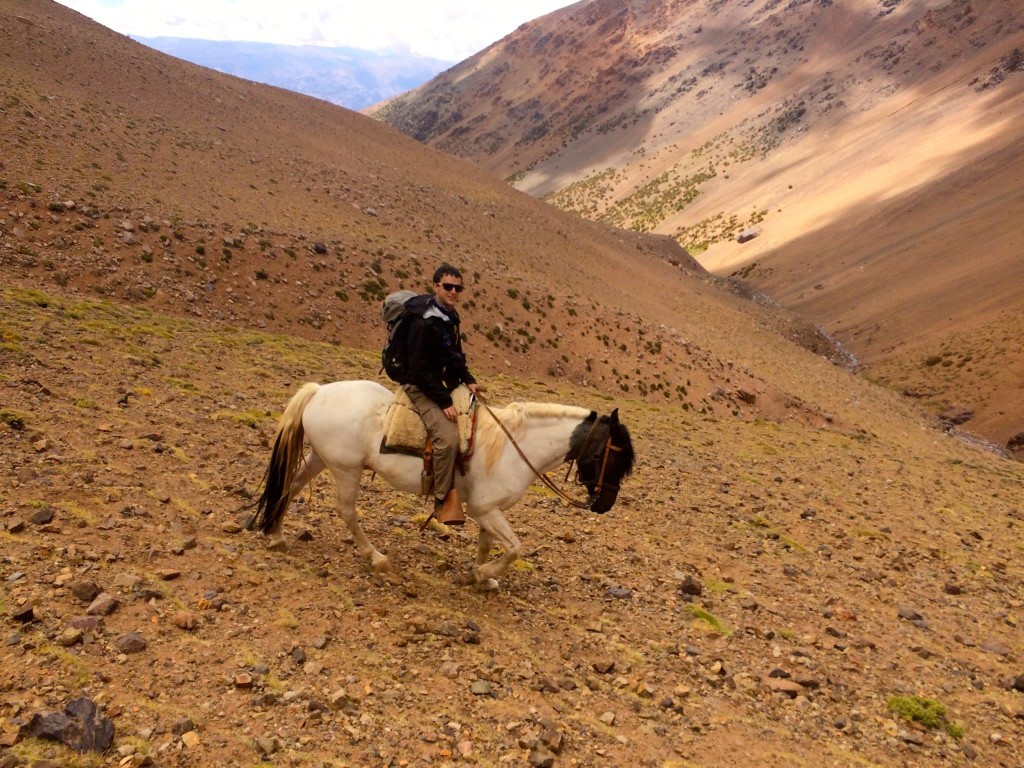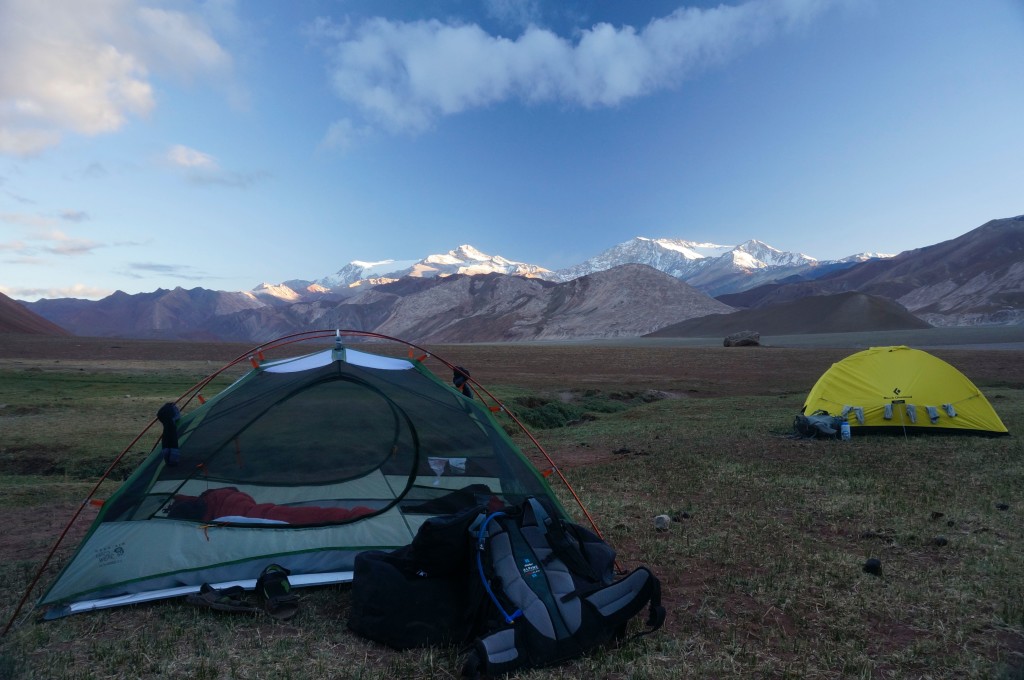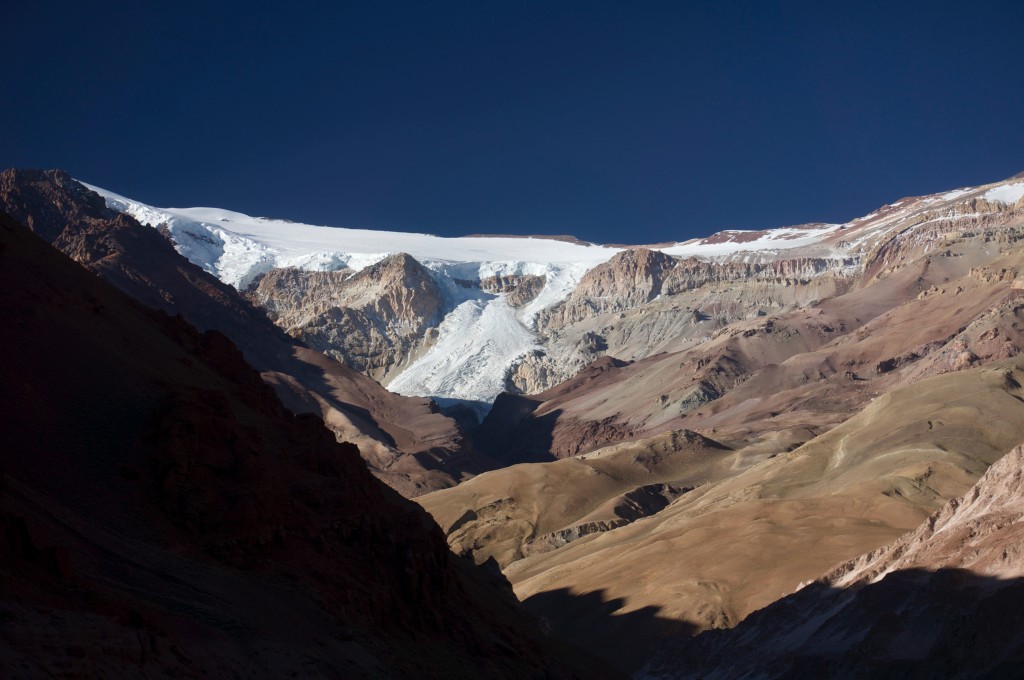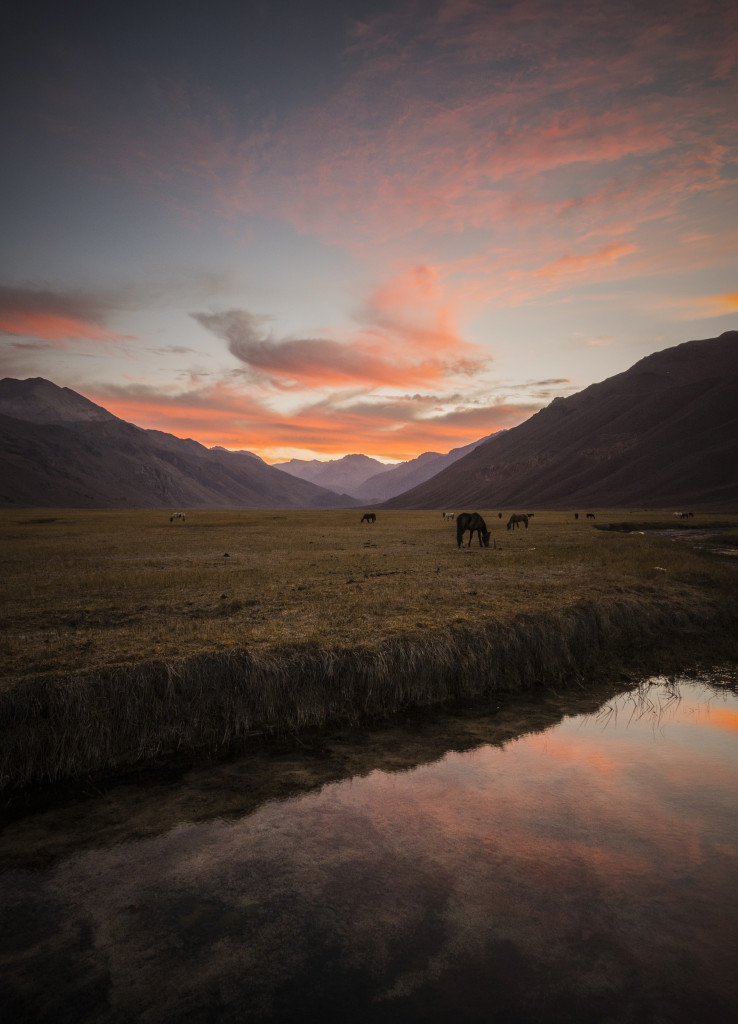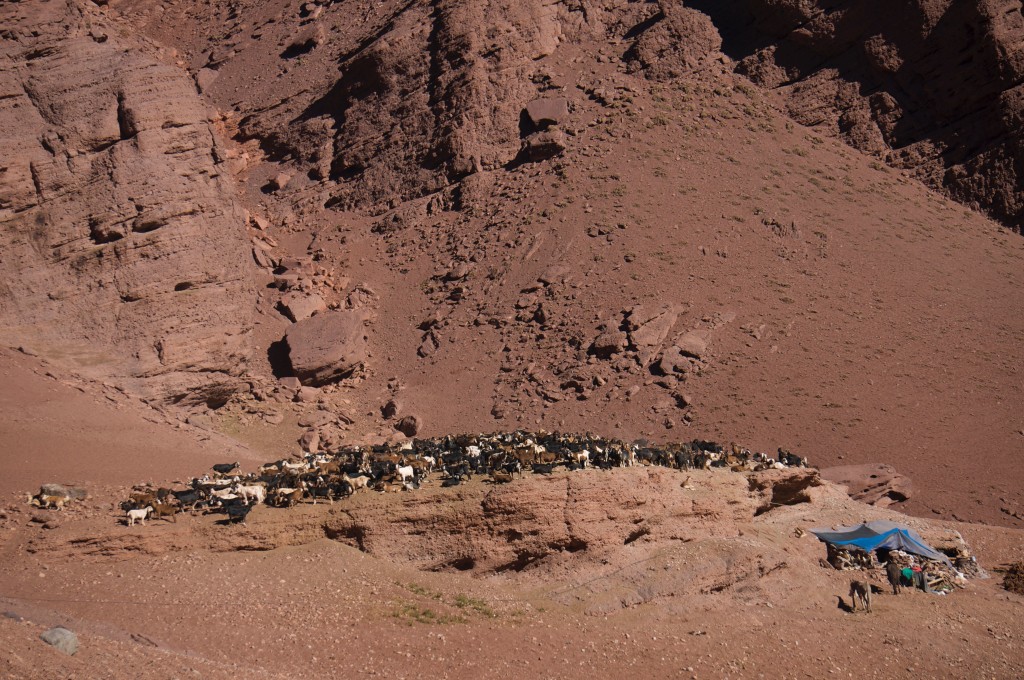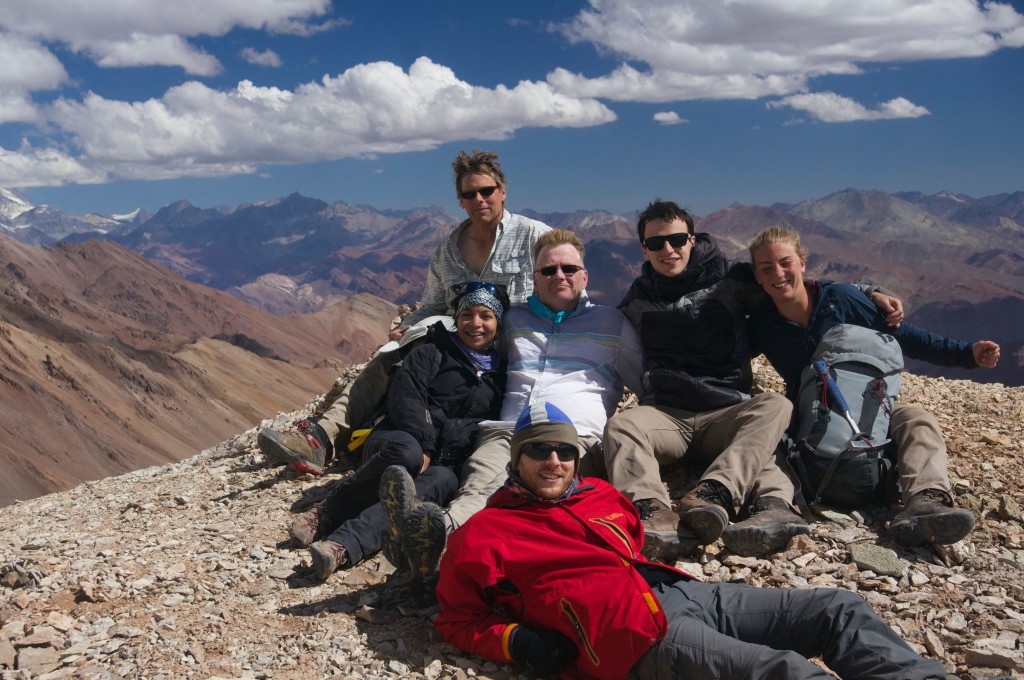Sebastián Ramírez is a Ph.D. student at UT Austin. You can read more about his research here.
I have been at the University of Texas at Austin working towards a Ph.D. degree in geology since 2011. I moved here after completing my M.Sc. (also in geology) at the University of Buenos Aires (Argentina). My co-advisor at UT is Brian K. Horton, who works trying to reconstruct past tectonic events by analyzing the sedimentary record contained in foreland basins. A big part of his research takes place along the Andes in South America. Last year I had the fortune to tag along and help him during one of his trips. We went, along with another UT Ph.D. student and three Argentine geologists to an area in the Principal Cordillera of the San Juan Province, approximately at between 32° 30’ and 33° S. The main purpose of the trip was to collect samples for geo- and thermocrhonological analyses; we wanted to understand the detrital zircon signatures and timing of uplift of the rocks that sourced a nearby Miocene foreland basin: the Manantiales basin.
Like many geologists, I find the romantic sense of adventure that comes with doing fieldwork in remote localities captivating. It played a significant role when choosing geology as my profession. Needless to say, this trip had plenty of that.
We arrived in a small town close to the Andean deformation front called Barreal in March 2015 (late summer in the southern hemisphere). We hired a local company to help us with the logistics, since we were expecting to be out in the field for about three weeks and our intended field area was fairly remote and not accessible by road. Helping us with the logistics in this case meant setting up a mule/horse convoy to carry our equipment, our food and us into the mountains.
Full of excitement, we left Barreal and drove for about two hours to a locality called Las Hornillas, where the dirt road ended. There, after meeting the five local guys who were going to help us, and loading the cargo mules, we climbed onto the horses and started our slow march up the mountains. All in all, we ended up with a 24-mule/horse convoy, which I must say was quite an impressive sight along narrow mountain passes!
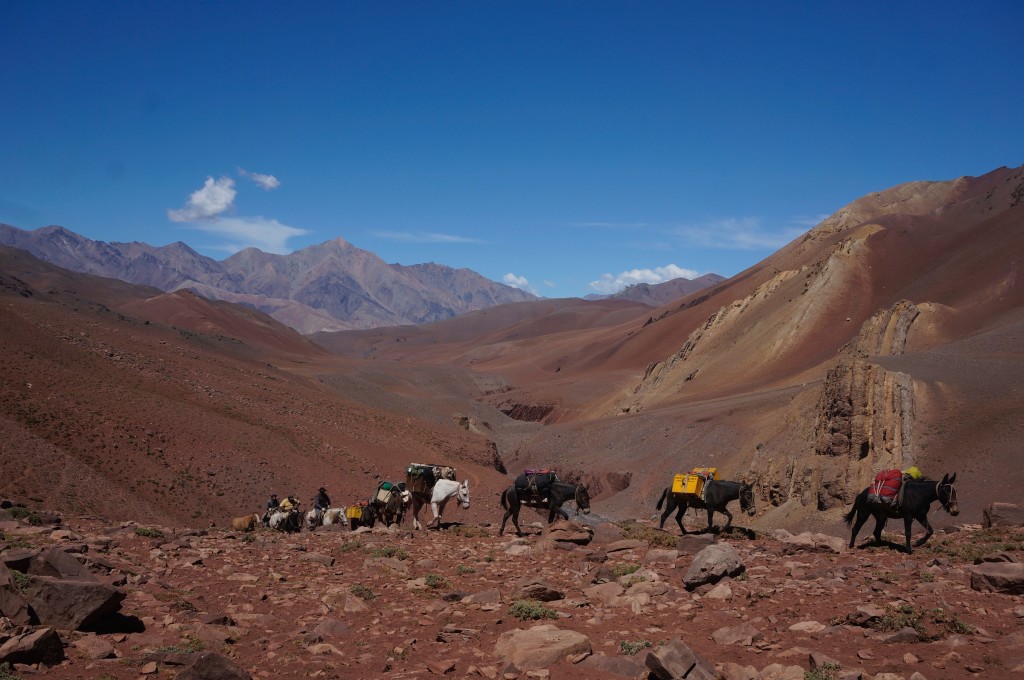
Part of the convoy. The sub-vertical beds belong to some of the Mesozoic sedimentary sequences that we were interested in sampling.
We set camp for the first night at a “vega” (a vegetated area with grass and water) located at about 3000 m above sea level. The second day proved to be among the toughest for both animals and people (some of us took turns hiking), because to reach the first of our sampling localities in the Principal Cordillera we first had had to go up and down a 4400 m mountain pass across the Frontal Cordillera, which is a large basement uplift of Permo-Triassic igneous rocks locally known as the Cordón del Espinacito. We were lucky enough to have absolutely clear skies throughout the day, so the views from the top were simply breathtaking.
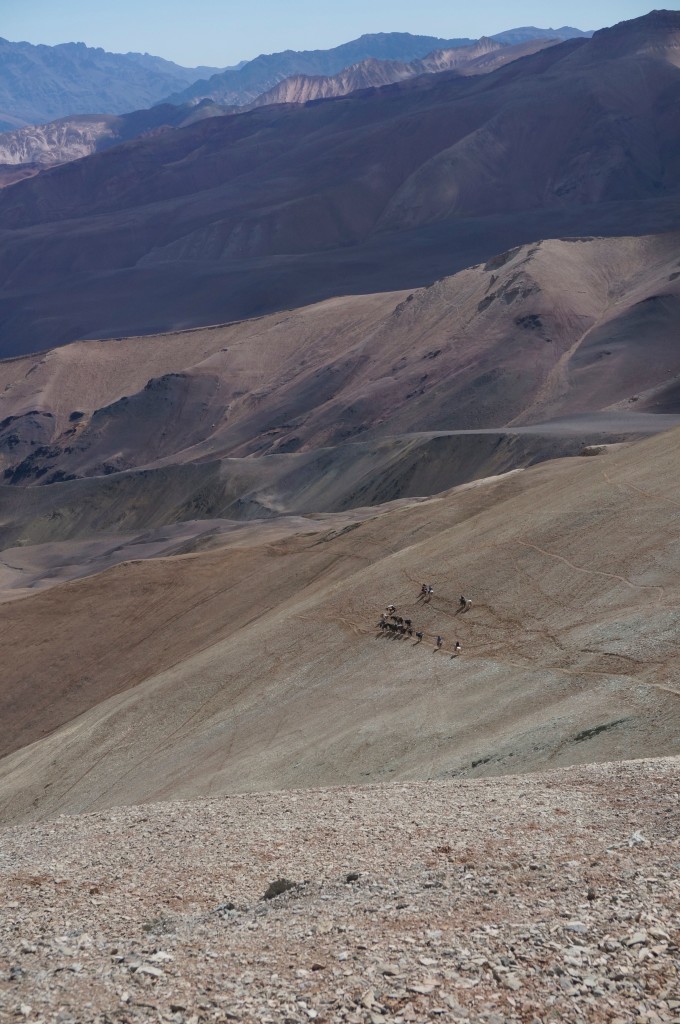
Part of the group going down the Cordón del Espinacito. As you see, there is not an excess of vegetation in the area.
Having reached the Principal Cordillera, we started with the sample collection. To be brief, what we would did was basically to spend two to three days camping at any given spot, hike/ride to the formations we wanted to sample and then move to a new campsite. We did this about six times overall, moving along different valleys and generally getting deeper and deeper into the Cordillera. Each campsite was different, and we got to enjoy some fantastic views of several 6000-7000m high mountains, Aconcagua Ramada and Mercedario among them.
Through our time there, the only other people we came across were two border police officers and the occasional goat shepherds who were there for the summer to bring their animals to the better grasses that grow at high altitudes (they call this the “veranada”). These shepherds live an incredibly tough life that has not changed significantly in a long time. They are constantly on the move, and only have blankets and highly precarious walls made of rocks to protect themselves from the elements in an area where temperatures con go as far down as -20°C, even in the summer. As an interesting anecdote, one evening towards the end of our trip one of those shepherds approached us and traded some of our non-perishable food for one of his goats. That goat became the group’s main meal for two straight days.
After many days and a successful sample-collection campaign we started making our way back to Barreal. At that point we were far enough into the mountains that it took us four days riding/hiking to get back to Las Hornillas. I had never felt so far removed and isolated from civilization as I did the day we started heading back, and I think the hot shower I had as soon as I arrived still stands as one of the most enjoyable experiences of my life.
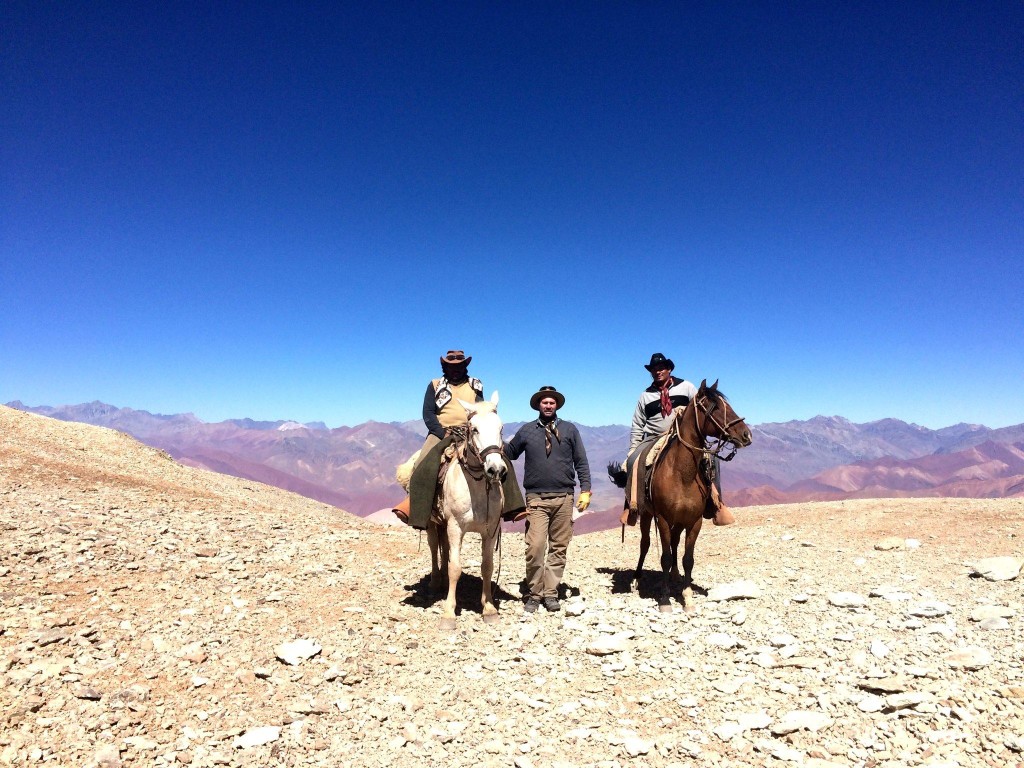
Some of the local guys (baqueanos) who helped us. The trip would not have been possible without them. Photo: Chelsea Mackaman-Lofland.
![]() This work is licensed under a Creative Commons Attribution-NonCommercial-ShareAlike 4.0 International License.
This work is licensed under a Creative Commons Attribution-NonCommercial-ShareAlike 4.0 International License.

